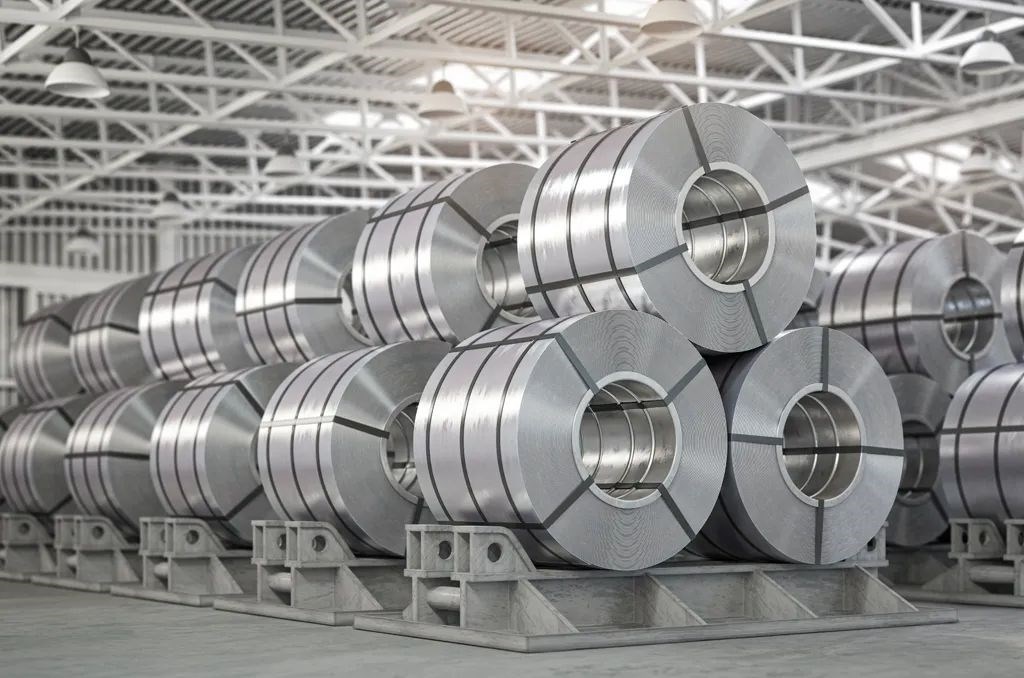Hot rolled steel vs Cold rolled steel
Published date: 06 November 2023

Choosing the right type of steel can make a significant difference in the outcome of a project. Two common options you’ll come across are hot rolled steel and cold rolled steel. Each has its unique characteristics and ideal applications. In this blog post, we’ll explore the differences between hot rolled and cold rolled steel, their advantages, disadvantages, and where you might find them being used.
What is rolled steel?
Rolling steel is much like rolling out dough with a rolling pin, only on a larger and industrial scale. In this process the metal, usually in the form of thick slabs, is passed through heavy machines fitted with enormous cylinders. These cylinders flatten the metal into sheets of the desired shape and size. The process of rolling is a key feature of most steel mills and represents a pivotal step in transforming raw metal into usable forms.
Hot Rolled Steel
Hot rolled steel is processed at high temperatures, typically over 926°C. These high temperatures do not allow the re-crystallization of steel, allowing the metal to be easily shaped and formed. Hot rolling is a cost-effective option with a few standout features.
Benefits of Hot Rolled Steel:
- Cost-effective: Hot rolling is a less expensive manufacturing process compared to cold rolling.
- Malleability: It’s more malleable than cold rolled steel, making it ideal for shaping and forming.
- Quick production: The high-temperature processing allows for faster production, making it readily available for large-scale projects.
Drawbacks of Hot Rolled Steel:
- Surface finish: Hot rolled steel often has a rough, uneven surface. This scaly finish can be removed by pickling, grinding or sand-blasting.
- Inconsistent dimensions: Due to the rapid cooling process, hot rolled steel can shrink non-uniformly and have slightly less precise dimensions.
Common Applications for Hot Rolled Steel:
Hot rolled steel finds its place in a variety of applications, especially ones that don’t require exact shapes. Examples include structural components in buildings, railway tracks, sheet metal and agricultural equipment. It’s also commonly used for welding and construction projects.
Cold Rolled Steel
Cold rolled steel undergoes rolling after it has cooled down from the initial manufacturing process. The metal is flattened and shaped at room temperature, resulting in some key differences compared to its hot rolled counterpart.
Benefits of Cold Rolled Steel:
- Smooth surface finish: Cold rolling produces a smoother, cleaner surface, making it suitable for applications requiring an attractive appearance.
- Precise dimensions: The cold rolling process offers more precise and consistent dimensions, which is crucial for applications demanding accuracy.
- Strength and hardness: Cold rolled steel is up to 20% stronger and harder than hot rolled steel, making it an excellent choice for parts that need to withstand heavy loads.
Drawbacks of Cold Rolled Steel:
- Higher cost: The cold rolling process is more labour and energy-intensive, leading to higher production costs.
- Reduced malleability: Cold rolled steel is less malleable than its hot rolled counterpart, making it less suitable for forming into complex shapes.
Common Applications for Cold Rolled Steel:
Cold rolled steel is often used in applications where precise dimensions, tight tolerances, strength and aesthetics are paramount. Examples include automotive parts, home appliances, aerospace components and metal furniture.
Choosing the Right Type of Steel
Choosing between hot rolled and cold rolled steel is a decision that hinges on the specific needs of your project. Hot rolled steel offers cost-effective solutions for a range of applications and is ideal for projects that require malleability and quick production. On the other hand, cold rolled steel provides a smoother surface finish, precise dimensions, and enhanced strength, making it the preferred choice for applications where appearance and accuracy are paramount. Understanding the characteristics of hot rolled and cold rolled steel will allow you to make informed decisions when selecting the right material for your project.
At Conro Electronics, we’ll show you how to improve product reliability while increasing performance and lowering costs. Our team of technical support specialists will provide your company with dependable global supply, unrivalled efficiency, and superior technical support.
Feel free to contact us on 0208 953 1211 or send us an email to info@conro.com




Comments
There are currently no comments, be the first to comment.